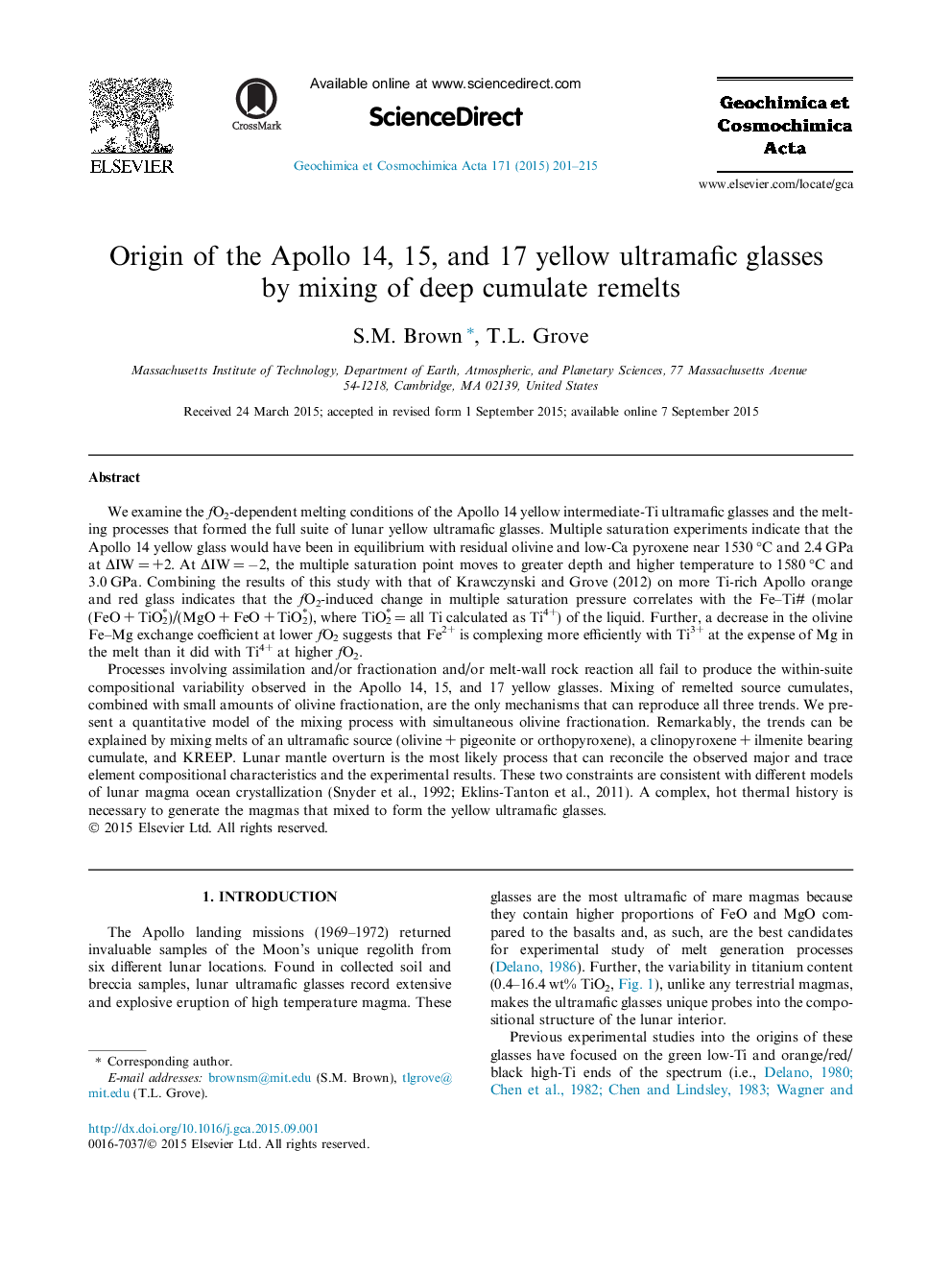| کد مقاله | کد نشریه | سال انتشار | مقاله انگلیسی | نسخه تمام متن |
|---|---|---|---|---|
| 4701852 | 1637986 | 2015 | 15 صفحه PDF | دانلود رایگان |
We examine the fO2-dependent melting conditions of the Apollo 14 yellow intermediate-Ti ultramafic glasses and the melting processes that formed the full suite of lunar yellow ultramafic glasses. Multiple saturation experiments indicate that the Apollo 14 yellow glass would have been in equilibrium with residual olivine and low-Ca pyroxene near 1530 °C and 2.4 GPa at ΔIW = +2. At ΔIW = −2, the multiple saturation point moves to greater depth and higher temperature to 1580 °C and 3.0 GPa. Combining the results of this study with that of Krawczynski and Grove (2012) on more Ti-rich Apollo orange and red glass indicates that the fO2-induced change in multiple saturation pressure correlates with the Fe–Ti# (molar (FeO + TiO2*)/(MgO + FeO + TiO2*), where TiO2* = all Ti calculated as Ti4+) of the liquid. Further, a decrease in the olivine Fe–Mg exchange coefficient at lower fO2 suggests that Fe2+ is complexing more efficiently with Ti3+ at the expense of Mg in the melt than it did with Ti4+ at higher fO2.Processes involving assimilation and/or fractionation and/or melt-wall rock reaction all fail to produce the within-suite compositional variability observed in the Apollo 14, 15, and 17 yellow glasses. Mixing of remelted source cumulates, combined with small amounts of olivine fractionation, are the only mechanisms that can reproduce all three trends. We present a quantitative model of the mixing process with simultaneous olivine fractionation. Remarkably, the trends can be explained by mixing melts of an ultramafic source (olivine + pigeonite or orthopyroxene), a clinopyroxene + ilmenite bearing cumulate, and KREEP. Lunar mantle overturn is the most likely process that can reconcile the observed major and trace element compositional characteristics and the experimental results. These two constraints are consistent with different models of lunar magma ocean crystallization (Snyder et al., 1992; Eklins-Tanton et al., 2011). A complex, hot thermal history is necessary to generate the magmas that mixed to form the yellow ultramafic glasses.
Journal: Geochimica et Cosmochimica Acta - Volume 171, 15 December 2015, Pages 201–215
